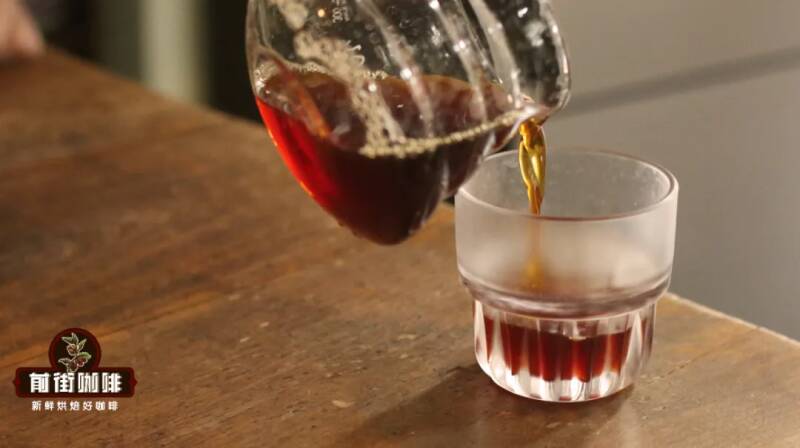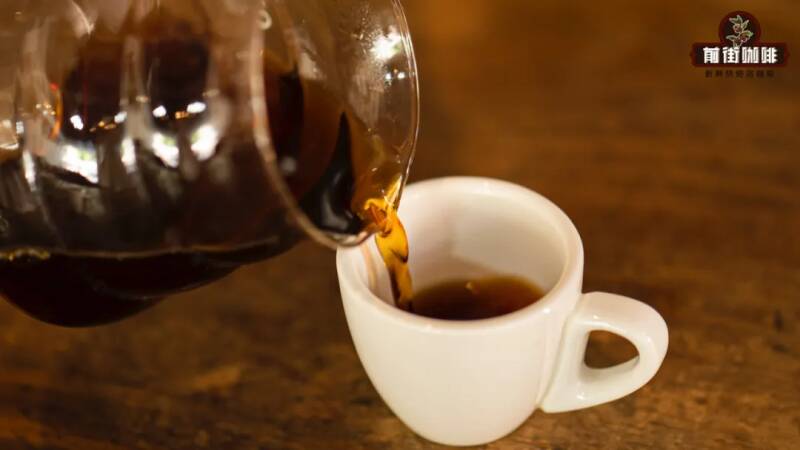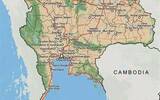What is the astringent taste in coffee? Is astringent taste or taste? How to adjust the sourness and bitterness of hand-brewed coffee?
"astringent" is a resident "player" in coffee. It is a taste, not a taste. The sour and bitter we often talk about is a feeling produced by the astringent feeling combined with the taste of coffee. Whether the coffee is mellow or not, we may not be able to tell it in the first place. But the coffee is not astringent, we can detect it directly. Because the astringency and other aspects of the taste, there is a big difference!

Taste descriptions such as mellow and light describe the amount of coffee liquid in the mouth. Astringency, on the other hand, refers to the rough feeling caused by the coffee liquid in the mouth. Negative feelings such as numbness, dryness, or unsmoothness of the tongue can be classified as astringency. The reason for the astringency of coffee is mainly due to the release of too many polyphenols from coffee beans. Chlorogenic acid, tannic acid and other substances are the main contributors to astringency (chlorogenic acid is the most important). When these substances come into contact with our saliva, they react with proteins in the saliva membrane, which in turn reduces the lubricity of the saliva itself. Lubricity mainly plays a role in reducing friction! So when the lubricity of saliva attached to the tongue is reduced, the friction of the tongue will increase, and when the coffee enters the mouth, it will have more friction with the tongue, and then be perceived by us, and this is the so-called astringency.

In addition to astringency, chlorogenic acid is also a contributor to sour and bitter taste, so most of the time the astringency does not appear alone, it will evolve into sour or bitter together with bitter or sour taste. Because most of the substances that cause astringency belong to macromolecules and the dissolution rate is relatively slow, generally speaking, when there is an obvious negative astringency in the coffee, it means that the cup of coffee is in a state of underextraction or overextraction. In most cases, astringency will be caused by over-extraction, such as overbrewing green tea, which will have a terrible sense of astringency. We can solve the problem by reducing the extraction efficiency.
Of course, the astringency is not all bad. High-quality astringency will not hide the flavor and taste of coffee, it will appear shallowly after the flavor performance, so that we can feel the existence of astringency but does not affect other feelings, so it is quite a multi-level performance, but often this kind of astringency is very few.
In addition to the effect of brewing, the astringency may also come from the coffee bean itself. In addition to the excessive release of polyphenols from coffee due to brewing errors, the coffee bean itself may also have an astringent taste because of too many of these substances. There are two situations that can lead to excessive polyphenols in the coffee bean itself. one is to pick the coffee bean when it is not ripe, then the coffee bean it handles will not be able to produce too many other substances because it is not ripe. Lead to astringent substances "stand out".
The other is that the degree of coffee roasting is too shallow, the internal development is insufficient, and there is a state of entrainment. In the same way as sour and bitter taste, the shallower the baking, the more astringent substances will be retained. Both cases will make the coffee itself astringent, because the beans themselves are rich in polyphenols, and the coffee will naturally behave accordingly. So you can know why the coffee fruit is picked all red, and why the beans can't be roasted too shallow (low fault tolerance rate) ~
-END-
Important Notice :
前街咖啡 FrontStreet Coffee has moved to new addredd:
FrontStreet Coffee Address: 315,Donghua East Road,GuangZhou
Tel:020 38364473
- Prev

Too old? The 26-year-old interview for Ruixing Coffee was rejected!
▲ Click to pay attention| Daily Boutique Coffee Culture Magazine Coffee Factory Yesterday, Gongfu Financial reported that a job seeker posted that he was asked about his age during an interview with Ruixing. After learning that he was 26 years old, the store manager said that the age did not meet the requirements and needed to be young and energetic. People, afraid of a generation gap when talking to them. This post was released
- Next

Introduction to Miao Coffee Estate, the 2024 Thailand Excellence Cup COE Champion
In Asia, there are suitable geographical environment and other conditions, and the Asian continent spans the three cold, warm and hot zones, with complex and diverse climate types. Therefore, many countries in Asia grow coffee, such as Yunnan, Vietnam, Thailand, Indonesia, etc. The history of coffee in Thailand dates back to the end of the 19th century, when Thailand was in Rama
Related
- What effect does Italian American coffee with filter paper have? Will coffee taste better if it is put on filter paper at the bottom of the powder bowl?
- What is the color difference in coffee beans? What are the characteristics of honey processed coffee beans? Why are the anaerobically treated coffee beans uneven in color?
- How does novice Xiaobai quickly get started and make coffee? Newbies learn to make coffee by hand and share the specific steps and process process!
- Costa tea has a shelf life of 100 years?! Expert: Unable to verify
- It's a huge uproar! American milk addition was rejected by Manner employees?!
- Mocha pot coffee bean recommendations| How fine and how much powder should be used for grinding? What parameter ratios do I need to use to make milk with Mocha pot coffee?
- What are the characteristics of the world's top ten coffee beans treated with Costa Rica honey? How to make black honey kadura from Tarazhu Pilon Processing Plant taste good?
- How to make deep-roasted coffee? What grinding water temperature does authentic Jamaica Blue Mountain No. 1 coffee use to brew it well?
- Selected high-grade rose summer coffee flavor tasting guide Why Panama rose summer has the aroma of flowers and fruits
- What equipment does a novice Xiaobai need to buy to learn to make coffee? Filter cup electronic scale bean grinder manual flushing pot purchase guide

